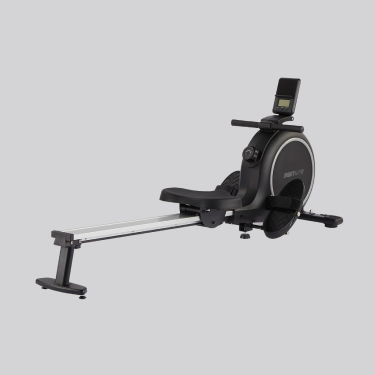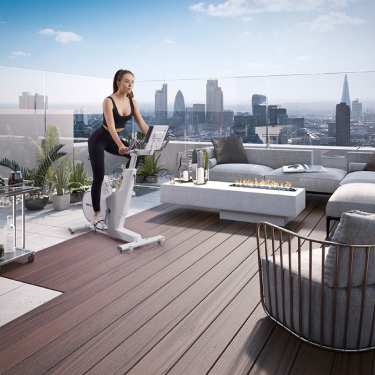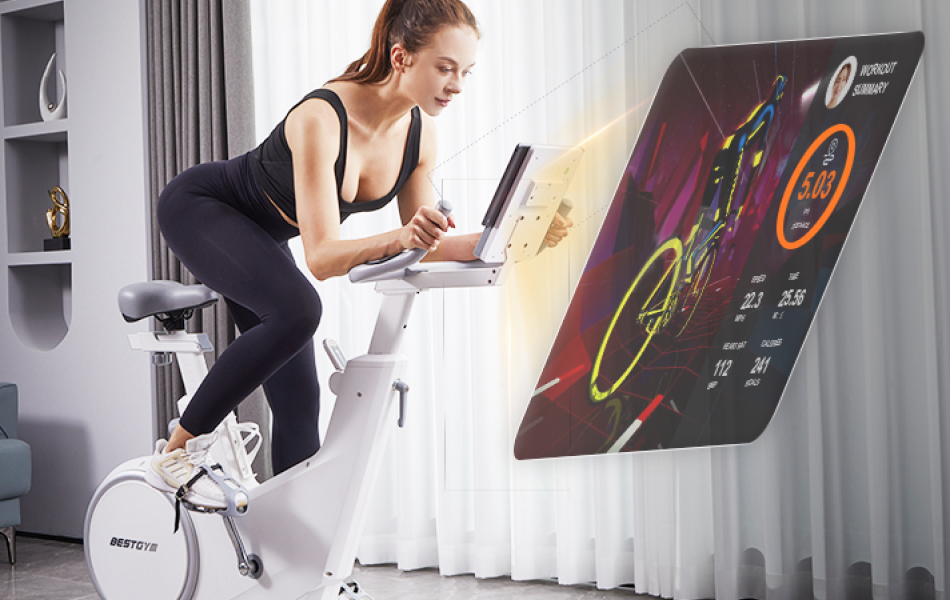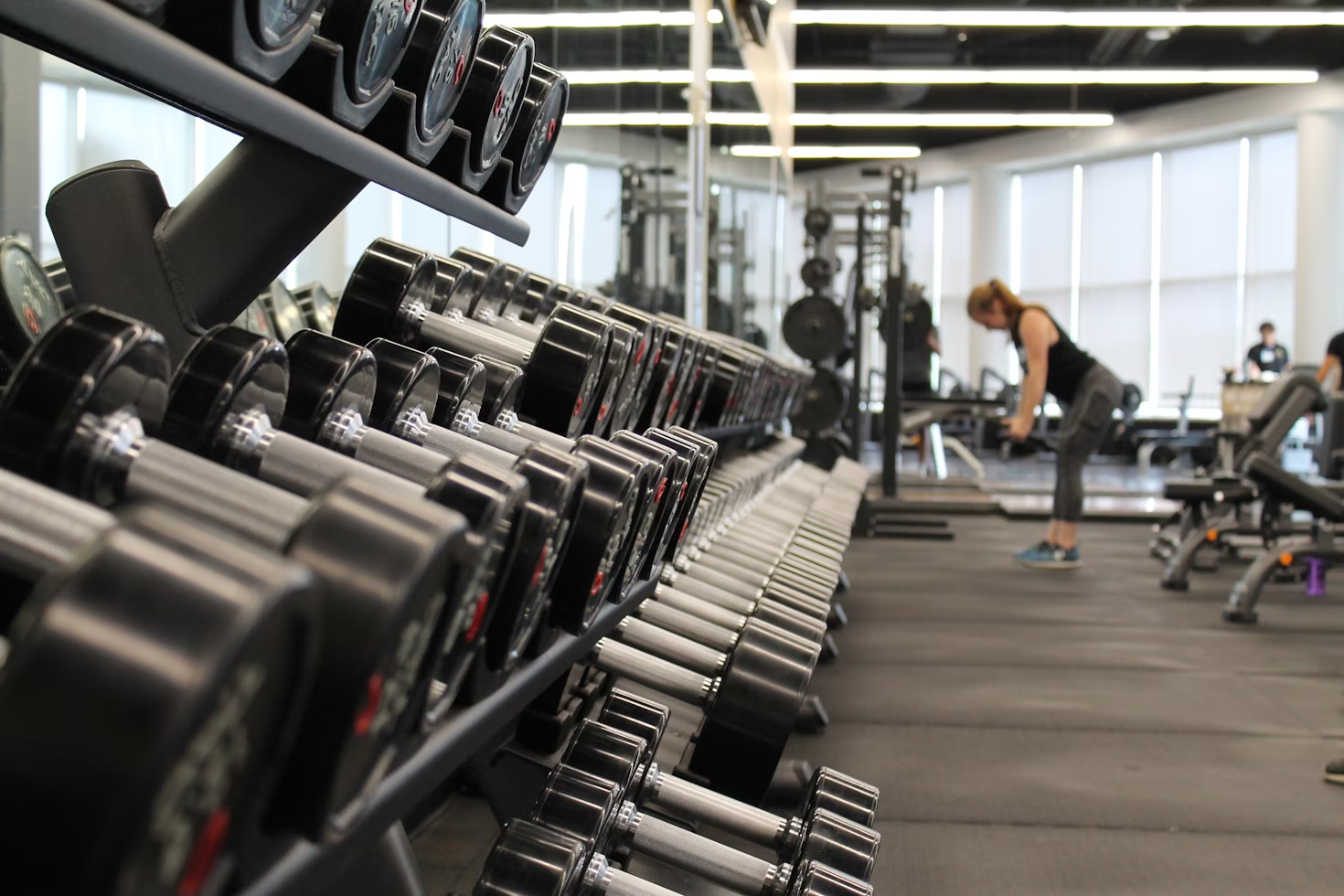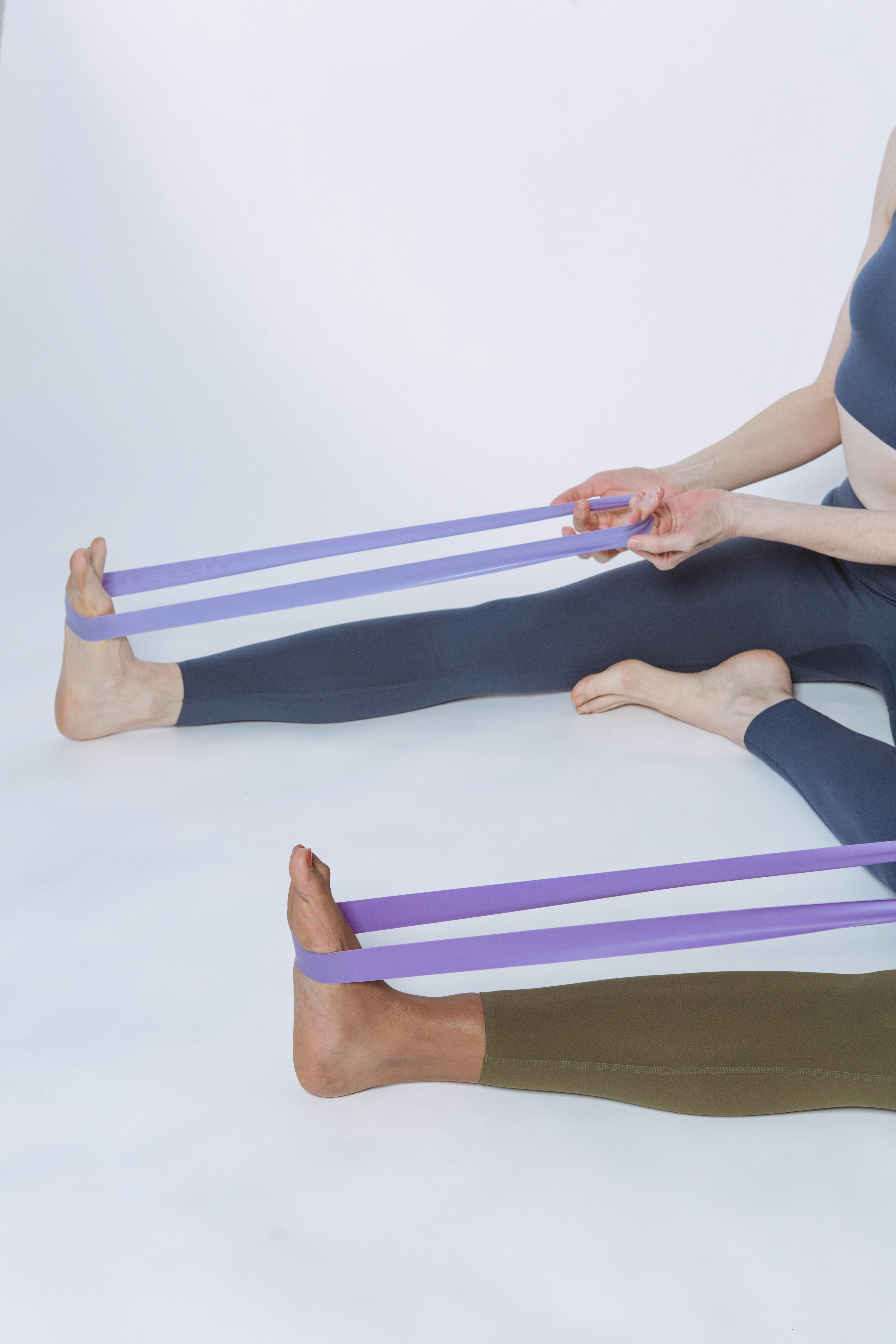Step-by-Step Guide: Setting the Correct Seat Height for Your Stationary Bike
Cycling on a stationary bike is an excellent way to stay fit, burn calories and improve cardiovascular health. However, to maximize these benefits and ensure a comfortable and injury-free workout, it's crucial to set the correct seat height for your stationary bike. In this comprehensive guide, we'll walk you through the step-by-step process of adjusting your bike's seat height, and provide tips on the ideal exercise bike handlebar height. We'll also explore the benefits of stationary bike exercise and how to optimize your workout experience.
Why is the Correct Seat Height for Stationary Bike Important?
Setting the right seat height for your stationary bike is vital for several reasons:
1. Comfort: A seat that is too high or too low can cause discomfort and pain, especially during long workouts. The recumbent stationary bike provides excellent back support, making it a comfortable option for low-impact cardiovascular workouts at home.
2. Efficiency: Proper seat height ensures that you can pedal efficiently, maximizing the power transferred to the bike and improving your workout effectiveness.
3. Injury Prevention: Incorrect seat height can lead to knee, hip, and lower back injuries due to improper alignment and repetitive strain.
4. Posture: The right seat height promotes proper cycling posture, reducing fatigue and enhancing endurance. 
Step 1: Preparing Your Seated Stationary Bike
Before you begin adjusting the seat height of your stationary bike, it's important to first ensure that the bike is on a flat, stable surface. This stability is crucial for a few reasons:
1. Safety: A stable bike reduces the risk of it tipping over or shifting during adjustments, which can prevent accidents or injuries.
2. Accurate Adjustments: A flat surface allows for more precise seat height adjustments. If the bike is on an uneven surface, your measurements and settings might be inaccurate, leading to an uncomfortable or ineffective workout.
3. Optimal Performance: A stable foundation ensures that all parts of the bike function correctly and smoothly. This is essential for maintaining the integrity of the bike and for achieving the best workout results.
Preparing the Area
- Clear the Space: Make sure the area around your bike is clear of any obstacles or clutter. This will give you ample space to move around the bike and make adjustments comfortably.
- Check the Floor: If you are placing the bike on a hard floor, consider using a rubber mat underneath. This can provide additional stability and protect your floor from potential damage.
- Level the Bike: If your bike has adjustable feet or leveling pads, use these to ensure the bike is perfectly balanced. This step is particularly important if the floor itself is not entirely even.
Tools and Safety Checks
- Have Tools Ready: Some seat height exercise bikes require tools, such as an Allen wrench or a spanner, to adjust the seat height. Make sure you have these tools on hand before you start.
- Inspect the Bike: Before making any adjustments, give your bike a quick inspection. Ensure that all nuts and bolts are securely tightened and that there are no loose parts. This is a good habit to get into regularly to maintain the bike's overall safety and performance.
By taking these preparatory steps, you set a solid foundation for making accurate and safe adjustments to your stationary bike. This preparation not only enhances your workout experience but also prolongs the life of your equipment.
Step 2: Initial Seat Height Adjustment
Start by setting the seat height approximately at your hip level when you stand next to the bike. This is a general guideline to get a starting point for more precise adjustments.
1. Stand next to the bike: Align the seat with your hip bone.
2. Adjust the seat: Loosen the seat adjustment knob or lever and raise or lower the seat until it aligns with your hip.
Step 3: Fine-Tuning the Seat Height
To fine-tune the seat height, follow these steps:
1. Mount the bike: Sit on the seat and place your feet on the pedals.
2. Pedal position: Rotate the pedals so that one is at the lowest point (6 o'clock position).
3. Leg extension: Your leg on the lower pedal should have a slight bend at the knee, approximately 25-35 degrees. Your knee should never be fully extended or locked.
If your knee is too bent or fully extended, adjust the seat height accordingly:
- Too bent: Raise the seat.
- Too extended: Lower the seat. 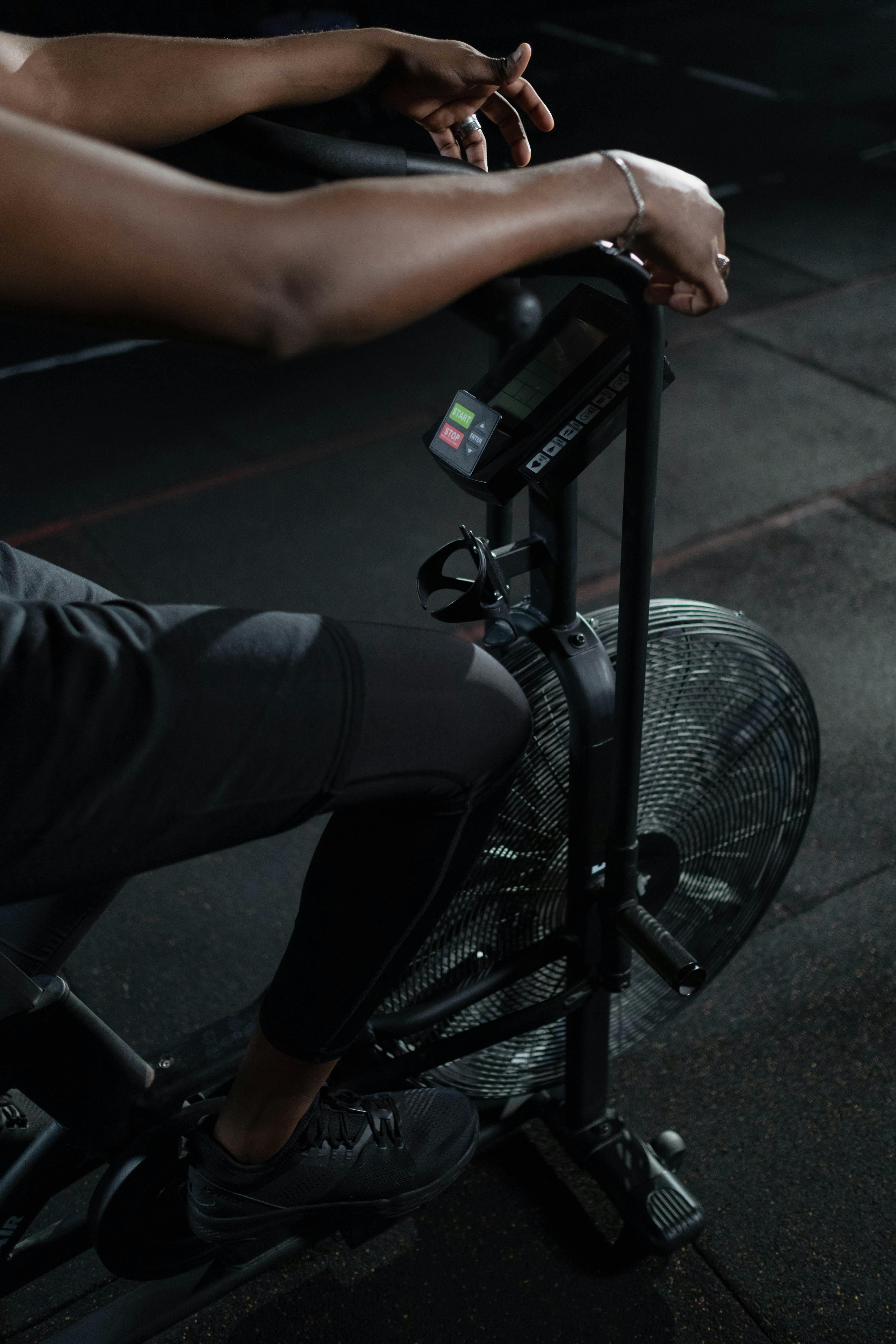
Step 4: Checking Your Position
After adjusting the seat height, it's essential to check your overall position on the bike:
1. Pedal a few rotations: Ensure that your leg movement feels natural and comfortable.
2. Check for hip rocking: If your hips rock side to side as you pedal, the seat is likely too high.
3. Adjust and re-check: Make small adjustments as needed and re-check your position until it feels right.
Step 5: Exercise Bike Handlebar Height
Once you've set the correct seat height, the next step is adjusting the exercise bike handlebar height. The handlebars should be set at a height that allows you to maintain a comfortable and relaxed upper body position.
1. Handlebar height: Generally, the handlebars should be level with or slightly higher than the seat. For beginners or those with back issues, a higher handlebar position is recommended.
2. Reach: Ensure that you can reach the handlebars without straining or hunching your shoulders.
3. Arm position: Your arms should have a slight bend at the elbows, not fully extended or locked.
Adjusting the handlebars properly can help alleviate back and shoulder pain, enhance your breathing, and improve your overall cycling posture.
How to Adjust Exercise Bike Handlebar Height for Maximum Comfort
Adjusting the handlebar height of your stationary sitting bike is crucial for a comfortable and effective workout. Follow these steps to find the perfect height:
1. Start with the Saddle: Ensure your saddle is set at the correct height before adjusting the handlebars. Your leg should be slightly bent at the knee when the pedal is at its lowest point.
2. Align with Your Body: Position the handlebars so they are at a height where you can maintain a slight bend in your elbows and keep your shoulders relaxed. This prevents strain on your neck and back.
3. Consider Your Riding Style: If you prefer an upright position, set the handlebars higher. For a more intense workout, such as a racing position, lower the handlebars to engage more muscles.
4. Test and Adjust: Start pedaling and pay attention to your comfort. Adjust the height slightly up or down as needed to find the optimal position.
5. Maintain Proper Form: Ensure your wrists are straight, not bent, to avoid strain. Your grip should be firm but relaxed.
By following these steps, you can achieve a comfortable and effective workout on your exercise bike, reducing the risk of injury and enhancing your overall experience.
6 Top Benefits of Stationary Bike Exercise
Understanding the benefits of stationary bike exercise can motivate you to maintain a regular workout routine. Here are some key benefits:
1. Cardiovascular Health: Cycling strengthens your heart and lungs, improving your cardiovascular fitness.
2. Calorie Burning: Stationary biking is an effective way to burn calories and support weight loss or maintenance.
3. Low-Impact Exercise: It provides a low-impact workout, reducing the risk of joint injuries compared to high-impact exercises like running.
4. Muscle Toning: Cycling helps tone your legs, thighs, and glutes while also engaging your core and upper body muscles.
5. Mental Health: Exercise releases endorphins, which can help reduce stress, anxiety, and depression.
6. Convenience: A stationary bike allows you to exercise at home regardless of weather conditions, making it easier to stick to your fitness routine.
Best Tips for an Effective Stationary Bike Workout
To get the most out of your stationary bike workouts, consider these tips:
1. Warm-Up: Always start with a 5-10 minute warm-up to prepare your muscles and joints.
2. Interval Training: Incorporate intervals of high intensity followed by recovery periods to maximize calorie burn and improve cardiovascular fitness.
3. Resistance Levels: Adjust the resistance to challenge your muscles and prevent workout plateaus.
4. Cool Down: End your workout with a 5-10 minute cool down and stretch to promote recovery and prevent stiffness.
5. Hydration: Stay hydrated by drinking water before, during, and after your workout.
6. Consistency: Aim for regular workouts, ideally 3-5 times a week, to see continuous improvements in fitness and health.
Common Mistakes to Avoid
When adjusting your stationary bike and during your workouts, avoid these common mistakes:
1. Ignoring Discomfort: Pain or discomfort is a sign that something is wrong. Adjust your bike setup or consult a professional if you experience persistent pain.
2. Overtraining: Give your body adequate rest between intense workouts to prevent burnout and injury.
3. Poor Posture: Maintain good posture by keeping your back straight and shoulders relaxed.
4. Skipping Warm-Ups and Cool Downs: Skipping these can increase the risk of injury and reduce the effectiveness of your workout.
How to Find the Correct Seat Height for Stationary Bike
To find the correct seat height:
1. Stand Next to the Bike: Position yourself next to the bike and adjust the seat so that it’s level with your hip bone.
2. Sit and Test: Sit on the bike and place your feet on the pedals. When one pedal is at its lowest point, your knee should have a slight bend of about 25 to 35 degrees. This angle helps in achieving an optimal balance between comfort and efficiency.
3. Fine-Tune: You may need to make minor adjustments to find the most comfortable and effective position.
How often Should I Check and Adjust the Seat Height for Stationary Bike?
You should check and adjust the seat height:
1. Before Every Ride: A quick check before each ride ensures that the seat height is still in the optimal position.
2. After Transporting the Bike: If you move your bike to a new location, re-check the seat height to account for any adjustments needed due to a different surface or stability changes.
3. Regular Maintenance: Periodically inspect the seat and adjustment mechanisms for wear and tear. Tighten any loose parts to maintain a safe and secure seat height.
Setting the correct seat height for your stationary bike is essential for a comfortable, efficient, and safe workout. By following the steps outlined in this guide, you can ensure that your bike is properly adjusted to fit your body. Additionally, paying attention to the exercise bike handlebar height and understanding the benefits of stationary bike exercise can enhance your overall cycling experience. Remember to incorporate regular adjustments, proper posture, and effective workout strategies to maximize your fitness goals. Happy cycling!


